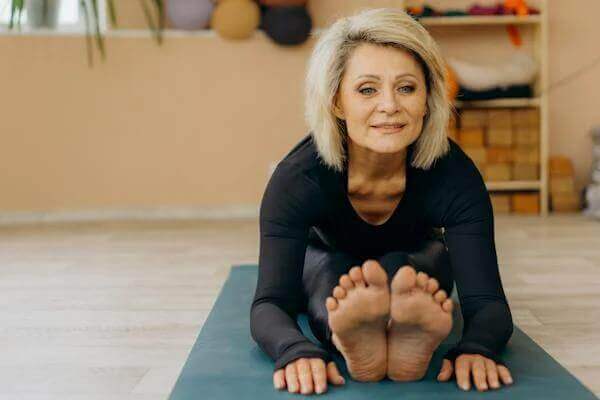Incontinence, a prevalent condition affecting millions globally, can significantly impact daily life and well-being. While multiple factors contribute to incontinence, exercise is key in managing and mitigating its symptoms. With winter's onset, the focus shifts to indoor activities and exercises, offering an avenue for those seeking to stay active while effectively dealing with incontinence.
Understanding Incontinence
Before we discuss the indoor activities that can help manage incontinence, it's necessary to comprehend the nature and prevalence of this condition. Statistics indicate that approximately 200 million people worldwide grapple with various forms of incontinence, with women and older adults being the most affected demographic. Stress, urge, and mixed incontinence represent diverse manifestations, each demanding a tailored exercise strategy for effective management.
The Impact of Exercise on Incontinence
Strengthening Pelvic Floor Muscles
Pelvic floor exercises, called Kegel exercises, form the cornerstone of incontinence management. These exercises target the muscles supporting bladder control and can be discreetly practiced anywhere. Regular engagement strengthens these muscles and enhances bladder control, reducing the frequency and severity of leakage incidents.
Performing Kegel exercises involves contracting and relaxing the pelvic floor muscles in a controlled manner. To identify the correct muscles, individuals can try stopping the flow of urine midstream. Kegel exercises should not be practiced while urinating regularly, as this can lead to incomplete emptying of the bladder.
Individuals should aim for three sets of ten repetitions daily for optimal results. Over time, as the pelvic floor muscles strengthen, the severity of incontinence symptoms tends to decrease.
Low-Impact Aerobic Exercises
Indoor activities such as walking, stationary cycling, and swimming offer excellent options for cardiovascular exercise without straining the pelvic floor. These exercises contribute to weight maintenance and improved bladder control.
- Walking:
Walking is a simple yet effective exercise that can be easily adapted for indoor settings. Setting aside time for brisk walks around the house or incorporating walking routines into daily activities can provide cardiovascular benefits without requiring specialized equipment.
- Stationary cycling:
This is an accessible option for indoor aerobic exercise and offers a low-impact alternative to traditional cycling. Investing in a stationary bike provides a convenient way of exercising regularly while avoiding the harsh winter weather. The controlled and repetitive motion of cycling helps improve cardiovascular health without placing excessive strain on the pelvic floor muscles.
Winter-Friendly Indoor Exercises
Yoga and Pilates
As winter weather confines outdoor activities, indoor yoga and Pilates are appealing alternatives. Focusing on core strength, flexibility, and balance, these low-impact routines offer a holistic approach to incontinence management without exacerbating symptoms. The controlled movements and poses can be adapted to various fitness levels.
Yoga, with its roots in ancient practices, has gained popularity for its numerous health benefits, including stress reduction and improved flexibility. Specific yoga poses can target the pelvic floor muscles, contributing to better bladder control. Poses such as the Bridge Pose, Cat-Cow Pose, and Child's Pose engage and strengthen the pelvic floor while promoting overall flexibility.
Pilates, a fitness system developed by Joseph Pilates, emphasizes core strength, stability, and flexibility. Pilates exercises often incorporate controlled movements that engage the pelvic floor muscles without putting undue stress on them. Incorporating Pilates routines into a weekly exercise regimen can improve pelvic floor function and reduce incontinence symptoms.
Chair Exercises
For individuals with mobility constraints or those uncomfortable with traditional exercises, chair exercises present a practical solution. Seated leg lifts, knee extensions, and seated marching are effective routines that promote muscle strength and flexibility. The convenience of these exercises allows individuals to incorporate them seamlessly into their daily routines.
Chair exercises are versatile and can be adapted to accommodate various fitness levels and physical abilities. For those with limited mobility or joint issues, seated exercises provide a gentle yet effective way to engage different muscle groups. Using a stable chair for support ensures safety while performing these exercises.
- Seated Leg Lifts:
While sitting on a sturdy chair, lift one leg straight out in front of you, hold for a few seconds, and then lower it back down. Repeat with the other leg. This exercise targets the thigh muscles and engages the core for stability.
Knee Extensions:
Begin by sitting comfortably on a chair with your feet flat on the floor. Extend one leg straight out in front of you and hold for a few seconds before lowering it back down. Repeat with the other leg. This exercise works the quadriceps and helps improve overall leg strength.
- Seated Marching:
While seated, lift your knees one at a time in a marching motion. Focus on engaging the abdominal muscles during each lift. This exercise promotes flexibility in the hips and strengthens the muscles in the lower abdomen.
Additional Options for Indoor Activities
Resistance Training
Incorporating resistance training into an exercise routine provides numerous benefits, including increased muscle strength, improved metabolism, and enhanced bone density. While many associate resistance training with gym equipment, various ways exist to use effective resistance exercises at home.
Bodyweight exercises such as squats, lunges, and push-ups can be modified to suit individual fitness levels. Resistance bands, affordable and versatile, offer an effective way to add resistance to exercises targeting different muscle groups.
Dance and Aerobic Workouts
Dancing and practicing aerobic workouts are a fun and engaging way to stay active indoors. These indoor activities can be adapted to various fitness levels and preferences, making them suitable for individuals managing incontinence.
Dance workouts, ranging from dance-based fitness programs to freestyle dancing in the living room, elevate the heart rate and promote overall well-being. Aerobic workouts, including jumping jacks, high knees, and side-to-side movements, contribute to cardiovascular fitness without requiring specialized equipment.
Stretching and Flexibility Exercises
Incorporating stretching exercises into a regular routine can help improve flexibility and reduce the risk of injury. Stretching also promotes relaxation and can be particularly beneficial for individuals experiencing stress-related incontinence.
Focus on stretches that address the lower back, hips, and thighs. These areas are interconnected with the pelvic floor muscles, and maintaining flexibility in these regions can contribute to better overall pelvic health.
Final Thoughts
Don’t let the winter blues affect your incontinence management! Find indoor activities that suit your personal mobility and movement constraints. Above all, find an exercise that you enjoy. It is so important to add exercise to your routine, and this is difficult to do if the activity feels like a chore. Incontinence is not a death sentence, so keep moving, keep exercising, and keep active.






 855-422-4556
855-422-4556 Chat
Chat E-Mail
E-Mail Monday - Friday 9:00AM to 5:00PM EST
Monday - Friday 9:00AM to 5:00PM EST






 Shopping With LL Medico
Shopping With LL Medico



 855-422-4556
855-422-4556